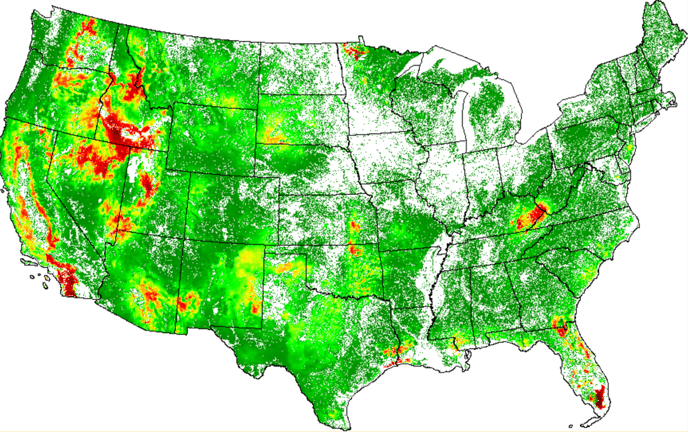Calculate wildfire hazard
Identify wildfire hazard across your analysis area
Previously, we’ve explored how Vibrant Planet segments the landscape into management units, attributed with landscape condition information. The next step is to determine the potential wildfire hazard.
How our wildfire model works
To calculate wildfire hazard, Vibrant Planet evaluates burn probability and fire intensity together. These calculations are powered by Pyrologix, a Vibrant Planet company. Areas with the highest hazard generally contain the greatest combination of burn probability and fire intensity.
- Burn probability (FSim) - the probability that a geographic location (30-m pixel) will experience a wildland fire. Modeled using FSim, which simulates the growth and behavior of hundreds of thousands of large fire events, based on historical fire occurrences, weather, terrain, and fuel.

- Fire intensity (wildEST)- the flame length that the pixel is likely to experience when it burns. This calculation uses a model developed by Pyrologix that performs 200+ simulations and uses local fuel, weather, and topography to generate estimates of contemporary flame lengths within a given pixel.

Wildfire hazard mapped in Truckee, California
Wildfire hazard data appears as color-coded polygons over a landscape. The darker the polygon, the higher the hazard. This information feeds into your future risk reduction strategy, helping predict how exposed resources on the landscape are to disturbance.
Next, let’s explore how we help you map resources and assets of value, so you can ultimately understand the opportunities to increase the resilience of the things that matter most.
.png?width=800&height=147&name=VP_Logo_Horiz_Color_RGB%20(4).png)